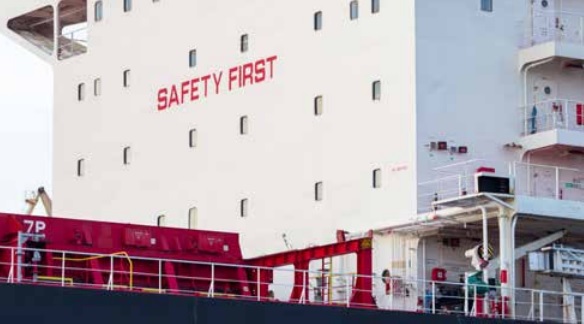Maritime safety specialist Propel finds that human element continues to be a huge contributor factor to major accidents and recommends ways for the industry to change its focus when it comes to improving maritime safety. Despite the continuing downward trend in total vessel losses, the risk of major accidents has increased due to higher potential consequences due to increased ship sizes and complexities of operations increase.
Benedikte Wentworth, CEO of Propel, notes that technology, training and regulations had all helped to cut losses over the years, but human failure is once again at the top of the agenda of large global corporations, including the oil majors. She believes this focus will trigger a much needed paradigm shift in the industry approach to safety, potentially threatening the business models of the dominant providers of safety services, including class societies, flag state control, port state control and vetting schemes.
“On a typical day in shipping 3 seafarers are killed, 30 persons injured, every other day a ship is lost and USD 8million paid out in insurance claims. This is a major concern for people working in the industry, for cargo owners, shipowners and insurers,” points out Wentworth
Mrs Wentworth explains that Propel’s mission is to advance this paradigm shift by leveraging unique insights and proven alternative methodology, including new 3D training simulation solutions.
In Wentworth’s opinion, companies in high risk industries that “operate safely” typically apply a mix of three strategies: 1) avoid failures by doing it right in the first place, 2) manage threats and failures when they occur (before they escalate), and 3) be prepared to handle critical situations. Wentworth and her colleagues at Propel reckon many shipping companies mostly focus on the first and third strategy, but often overlook the second, which is managing threats and failures when they occur.
“Failures will occur, it is just a matter of time. If failures are not handled properly, they may develop into critical situations and accidents. This has become an industry blind spot because the biased focus on doing it right makes people reluctant to be open about their failures, concerns and mistakes. Our findings show that in most ship accidents, failures were already known by the crew prior to the accident, but were not addressed and corrected. The three strategies are interlinked and they must be combined,” Mrs Wentworth maintains.
“The doing it right in the first place approach can be exemplified by the implementation of the ISM code when the saying was: Write down the right way to do a task, do what you write and prove it. And we do a lot to “prove it”. In fact, every second minute a safety inspection or audit is completed in shipping. Thousands of auditors and inspectors across the world are engaged by classification societies, flag and port state authorities, vetting, insurance and HSEQ departments. They verify that ships do the right thing and comply with technical and procedural requirements. However, ticking boxes never made anyone safer.” Mrs Wentworth explains.
Torkel Soma, partner and senior consultant at Propel added that insight from surveys involving thousands of seafarers on an anonymous basis is that 45% admit that they break procedures on a regular basis. At the same time, seafarers are afraid of being caught breaking the procedures and, intentionally or not, cover-up their non-compliance and mistakes.
Mr Soma highlighted the need to get back to the initial important purpose and prevent disasters at any time, not just during the inspections. Propel’s measurement of organizational maturity of handling failures has showed that 50% of ships in the global fleet have developed a ’cover-up’ culture, he added.
“To put it succinctly, the maritime safety regimes are funded upon distrust and there is a need to bring trust back to reduce major accidents,” Mr Soma stated.
Improving safety or performance is not only about improving individuals but also improving collaboration. Mrs Wentworth suggests that the shipping industry could learn from the aviation industry where transformation towards a more collaborative and open culture started 20 years ago by implementing what is called ‘threat and error management’.
Propel have developed together with Attensi, 3D simulation models to scale insights and to practice new ways of thinking as regards safety behaviour. The interactive models have the potential to be truly transformative, not only in the classroom but also on board.
“Built on the concept of gamification, the idea is to create an environment where reality and simulation merge to create valuable training scenarios with the added element of motivational competition, achievement, recognition and learning analysis.” Didrik Svendsen, partner and senior consultant at Propel.
Mr Svendsen said that K Line Shipping (UK) is one of the owners that it has already seen the value of digitalization when it comes to crew training as they have started implementing Propel’s solution in officer seminars and will start training onboard in June.





































![]](https://safety4sea.com/wp-content/uploads/2024/06/shutterstock_2318996555-350x250.jpg)
























